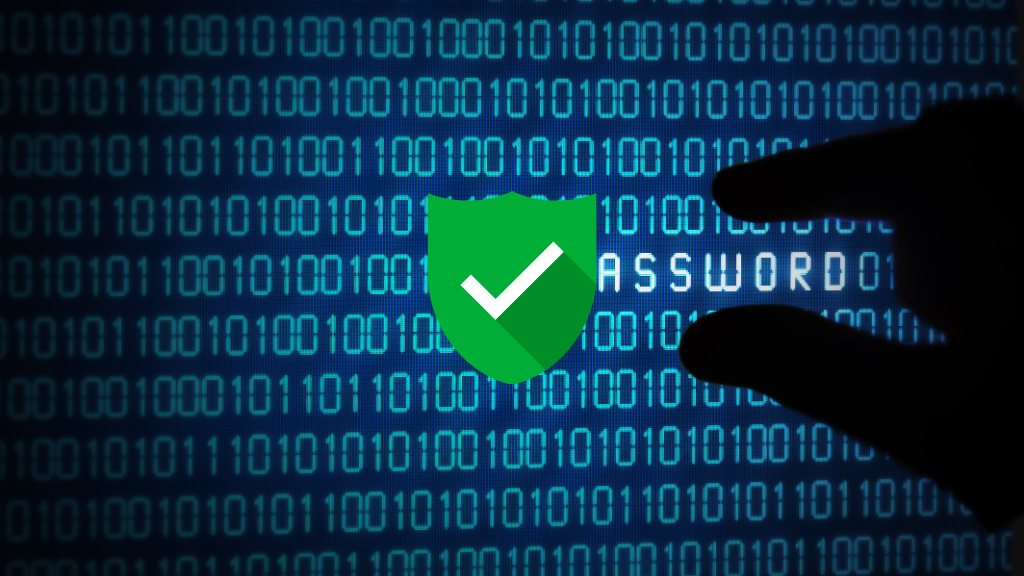Why Your Website Security Matters More Than Ever
Picture this: A small business owner launches their new online store on Friday. By Monday, hackers have stolen customer credit card information, and the business faces thousands in fines and a ruined reputation. The worst part? This could have been prevented with basic security steps that cost less than $100 per month.
This scenario happens every day. With over 600 million cyber attacks worldwide each day, website security isn’t optional anymore—it’s essential for survival. The average cost of a data breach has reached $4.88 million, and small businesses often can’t recover from even smaller attacks.
If you run a WordPress website or Shopify store, this guide will show you exactly how to protect your business from hackers.
WordPress Security: Protecting the World’s Most Popular Website Platform
WordPress powers over 40% of all websites on the internet. This popularity makes it incredibly useful but also makes it a favorite target for hackers. The good news? WordPress can be very secure when you know what to do.
Why Hackers Target WordPress Sites
WordPress sites face several unique security challenges that make them attractive targets for cybercriminals. Because WordPress powers over 40% of all websites, hackers can develop automated attacks that scan the internet and hit thousands of WordPress sites simultaneously. This widespread usage means that when hackers find a vulnerability, they can exploit it across countless websites with minimal effort.
Most WordPress security problems stem from third-party plugins and human error. While WordPress itself is generally secure, the thousands of available plugins create potential weak spots since they’re developed by different companies with varying security standards. Many site owners unknowingly create vulnerabilities by postponing software updates, using weak passwords, or choosing unreliable hosting providers. Budget hosting services often cram hundreds of websites onto the same server, which means if one site gets hacked, yours could be affected too. These factors combine to make WordPress sites both valuable targets and potentially easier to compromise than custom-built websites.
Essential WordPress Security Steps for Business Owners
Keep Everything Updated This is your most important security task. WordPress regularly releases security updates, and hackers quickly target sites that don’t install them.
- Set up automatic updates for WordPress core
- Update plugins and themes monthly (or immediately when security updates are available)
- Remove any plugins or themes you don’t use
Use Strong Login Security Most WordPress hacks happen through weak login security.
- Use complex passwords with at least 12 characters
- Enable two-factor authentication (2FA) so hackers need your phone to log in
- Limit login attempts to prevent brute force attacks
- Change the default “admin” username to something unique
Choose Plugins Carefully Plugins add functionality but also add risk, so selecting them requires careful consideration. Only install plugins from trusted developers with good reputations in the WordPress community. Before installing any plugin, check when it was last updated—avoid plugins that haven’t been updated in six months or more, as they may contain unpatched security vulnerabilities or compatibility issues.
Take time to read user reviews and check how many active installations the plugin has, since popular, well-reviewed plugins are generally more reliable and secure. Finally, regularly audit your installed plugins and remove any that you don’t actively use, as inactive plugins can still create security risks even when they’re not being used.
Secure Your Hosting Your hosting provider handles much of your security foundation:
- Choose hosts that specialize in WordPress security
- Look for features like malware scanning, firewalls, and daily backups
- Avoid the cheapest shared hosting options
- Ensure your host provides SSL certificates (the “https” in your web address)
Implement a Website Firewall A web application firewall (WAF) acts as a protective barrier that blocks malicious traffic before it reaches your site. These services work by filtering out known attack patterns and suspicious traffic, essentially screening visitors to ensure only legitimate users can access your website. Many firewall services go beyond basic protection by including malware scanning that regularly checks your site for infections and cleanup services that help remove threats if they’re detected. For small businesses, these comprehensive security services typically cost between $10-50 per month, making them an affordable investment compared to the potential cost of a security breach.
WordPress Security Plugins Every Business Should Consider
Security Monitoring Plugins: Look for comprehensive security plugins that offer multiple protection layers. The best options include firewall protection that blocks malicious traffic before it reaches your site, malware scanning that regularly checks your files for infections, and security hardening features that close common vulnerabilities. Some plugins focus on user-friendly interfaces that make security management simple for non-technical business owners, while others provide professional-grade protection with detailed reporting and cleanup services when problems are detected.
Backup Plugins: Choose backup plugins that offer automated scheduling so you don’t have to remember to create backups manually. Look for solutions that can store your backups in cloud services like Google Drive or Dropbox for extra safety. The most effective backup plugins provide comprehensive coverage of your entire website including files, databases, and settings. Some offer real-time backup capabilities that save changes as they happen, while others provide scheduled backups that run daily or weekly depending on your needs.
Warning Signs Your WordPress Site May Be Compromised
Watch for these red flags:
- Sudden drops in website traffic
- Google warnings about malware
- Slow website performance
- Unknown admin users in your WordPress dashboard
- Unexpected pop-ups or redirects
- Customer complaints about suspicious emails
Shopify Security: E-commerce Protection in a Managed Environment
Shopify handles much of your store’s security automatically, but you still have important responsibilities as a business owner.
How Shopify Protects Your Store
Built-in Security Features:
- PCI DSS Compliance: Shopify handles credit card security requirements automatically
- SSL Certificates: All Shopify stores get secure “https” connections
- Server Security: Shopify maintains secure servers and infrastructure
- DDoS Protection: Protection against attacks that try to crash your site
- Fraud Detection: Built-in tools to identify suspicious orders
Your Shopify Security Responsibilities
Even with Shopify’s built-in protection, you need to:
Secure Your Admin Access
- Use a strong, unique password for your Shopify admin
- Enable two-factor authentication
- Limit staff permissions to only what they need for their job
- Regularly review who has access to your store admin
Choose Apps Carefully Shopify apps extend your store’s functionality but can create security risks:
- Only install apps from the official Shopify App Store when possible
- Read reviews and check the app developer’s reputation
- Review what permissions each app requests
- Remove apps you no longer use
- Keep all apps updated
Protect Customer Data
- Only collect customer information you actually need
- Use Shopify’s built-in customer data tools rather than third-party alternatives
- Be careful when exporting customer data
- Train staff on privacy and data protection
- Have a plan for handling data breach requests
Secure Third-Party Integrations Many businesses connect external tools to their Shopify store:
- Use official integrations when available
- Ensure any third-party service meets security standards
- Regularly audit what external services have access to your data
- Use API keys and tokens securely (never share them publicly)
Shopify-Specific Security Best Practices
Payment Security:
- Use Shopify Payments when possible (it’s the most secure option)
- If using external payment processors, ensure they’re PCI compliant
- Enable fraud analysis features
- Set up notifications for high-risk orders
Theme Security:
- Use themes from reputable developers
- Keep your theme updated
- Be cautious with heavily customized themes
- Test all theme updates on a development store first
Order and Inventory Security:
- Set up alerts for unusual order patterns
- Use inventory management tools to track stock discrepancies
- Enable order confirmation emails to detect unauthorized purchases
- Regularly review your order history for anomalies
Red Flags for Shopify Store Security
Monitor your store for these warning signs:
- Unexpected changes to your store settings
- Orders from unusual locations or with suspicious patterns
- Customer complaints about unauthorized charges
- Sudden changes in your store’s appearance
- Notifications about failed login attempts
More General Security Best Practices for Both Platforms
Employee Training and Awareness
Your team can be your strongest security asset or your biggest vulnerability:
- Train staff to recognize phishing emails
- Establish clear procedures for handling customer data
- Create strong password policies
- Limit access based on job responsibilities
- Regular security awareness updates
Backup and Recovery Planning
Even with perfect security, problems can happen:
- Maintain regular, automated backups
- Test your backup restoration process
- Keep backups in multiple locations
- Document your recovery procedures
- Have a communication plan for security incidents
The Cost of Security vs. The Cost of a Breach
When you break down the numbers, investing in website security becomes an obvious business decision. A comprehensive security setup for most small businesses costs between $35-170 per month, which includes a quality security plugin, reliable hosting, professional backup services, and essential security features like SSL certificates and two-factor authentication. Many of these protective measures, such as SSL certificates and basic authentication tools, are often available at no additional cost.
Compare this modest monthly investment to the cost of a security breach. The average small business faces $25,000 to $100,000 in direct costs when hackers successfully attack their website, but the real damage often goes much deeper. Beyond immediate financial losses, businesses suffer long-term reputation damage that drives away customers, face potential legal and regulatory fines, and must invest countless hours rebuilding their online presence from scratch. Some small businesses never recover from a major breach and are forced to close permanently. When viewed this way, spending $100-200 per month on security isn’t just smart—it’s essential insurance for your business’s survival and success.
The math is clear: investing in security costs far less than recovering from an attack.
Taking Action: Your Security Checklist
This Week:
- Enable two-factor authentication on all admin accounts
- Update all software, plugins, and apps
- Set up automated backups
- Review and strengthen all passwords
This Month:
- Audit all plugins/apps and remove unused ones
- Implement a web application firewall
- Review user permissions and access levels
- Create an incident response plan
Ongoing:
- Monitor security notifications and alerts
- Keep everything updated
- Regularly review access logs
- Train your team on security best practices
Conclusion: Security as Your Competitive Advantage
In today’s digital world, security isn’t just about preventing attacks—it’s about building customer trust and protecting your business reputation. Customers increasingly choose businesses they trust with their personal and financial information.
Whether you run a WordPress website or Shopify store, the basic principle remains the same: small, consistent security investments protect you from massive potential losses. The businesses that succeed will be those that make security a priority from day one.
Don’t wait for an attack to take security seriously. Start implementing these practices today, and make security a competitive advantage that sets your business apart.




